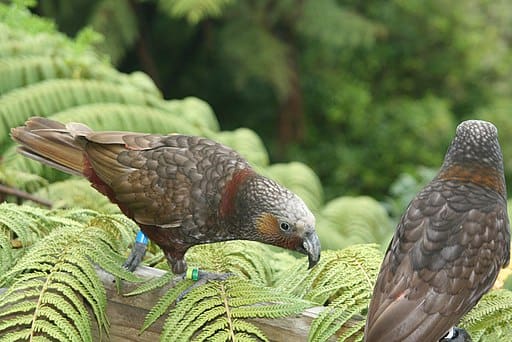Status:

Collaborators/Funders:
The Māori community’s Te Iwi Tahi o Karioi Ahu Whenua Trust, The Cape Sanctuary in Hawke’s Bay, Native Bird Rescue – Waiheke Island, Auckland Zoo, New Zealand Parrot Trust, New Zealand Department of Conservation, Zealandia Sanctuary, Keefe Family Foundation, Te Iwi Tahi o Karioi (TIToK), the Karioi Project
Kākā are threatened by habitat destruction and predation by introduced species including stoats, which kill females on eggs, and other mammals. Introduced wasps and possums compete with Kākā’s for honeydew, a high-energy resource required by Kākā for successful breeding. A more recent danger faced by Kākā fledglings is window strikes, causing injury or death to many birds each year.
The WPT has joined with local and regional partners to support intensified feral predator control, and rehabilitation, release and tracking of injured Kākā on Waiheke Island, a citizen science project assessing the effectiveness of window markers in preventing bird collisions, and with volunteers, radio-tracking captive-bred birds released at Cape Sanctuary to better understand movements and survival.
Status: IUCN Endangered / CITES Appendix II
Population: 3750-15,000
Range: N.m. meridionalis: South and Stewart Islands and larger offshore islands of New Zealand.
N.m. septentrionalis: North Island and some offshore islands.
Natural history: This species is restricted to unbroken Nothofagus and Podocarpus forest between 450 and 1000 m (1476-3280 ft). It will visit gardens and orchards in winter. Forages for fruits, berries, seeds, flowers, buds, nectar, sap, invertebrates, honeydew from scale insects and larvae. Birds have been recorded feeding in kiwi fruit orchards and on flax flowers. Are quiet and shy.
